There are many advantages to installing floating floors in your home. Let’s examine whether installing a floating floor is the best option for your house or apartment.
“Floating floor” refers to the construction of flooring material that’s essentially locked together using a system similar to puzzle pieces. The floorboards fit together, creating a tight bond and allowing your floor to be stable without any actual attachment to the subfloor.
Please read on for more information.
Understand Floating Floors
Do you have a floating floor and are unsure? Look down. If it’s “floating flooring,” it might look like a single sheet, but it’s actually made from three separate layers: the flooring material you walk on; an underlayment of subflooring; and finally, a strong network of joists that provide support like a skeleton. You can contrast this with conventional installation techniques, which are effective when the flooring is firmly adhered to the layers beneath with nails or glue. This creates a permanent attachment that lasts until the floor is worn out, torn up, and replaced. Floating floors are much simpler to switch out and replace than traditional floors because they are merely placed on top of the subfloor without being fixed.
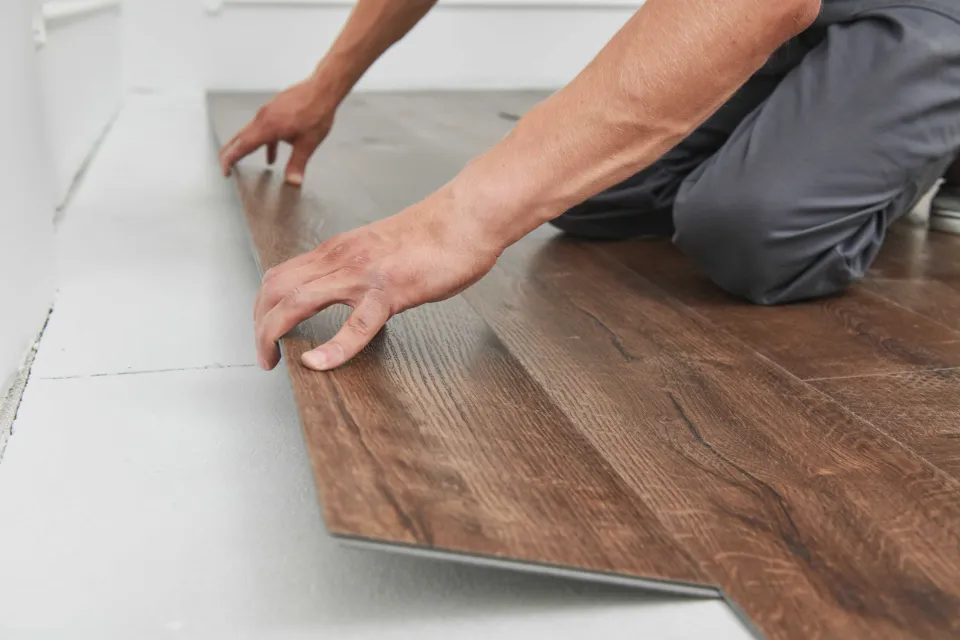
Floating Floor Examples
There are three types of flooring that are most commonly installed with floating floor methods:
- Laminate flooring:The prime example of a floating floor is laminate flooring, which is almost never glued down to the subfloor. With the floating technique, the flooring can expand and contract in response to variations in the relative humidity of a room without buckling. Laminate flooring planks are generally joined together along the edges and end with a modified tongue-and-groove system, often known as “click-lock” or “fold-and-lock.” The shape of the interlocking grooves may vary from manufacturer to manufacturer, since there are several proprietary methods of connection.
- Luxury vinyl flooring (LVF):Sometimes known as vinyl plank flooring, luxury vinyl flooring (LVF) usually snaps together board-to-board, in much the same fashion as laminate planks, although some types can also be glued to the subfloor. They can lock together thanks to tiny tongues and grooves that were engineered into the boards. While some LVF varieties are quite rigid, others are semi-flexible planks.
- Engineered wood flooring:Some engineered wood flooring is installed by nailing or stapling it down to a plywood subfloor. Other brands, though, are installed as floating floors. Similar to laminate flooring, engineered wood flooring has a decorative top layer that is adhered to a plywood or MDF core.
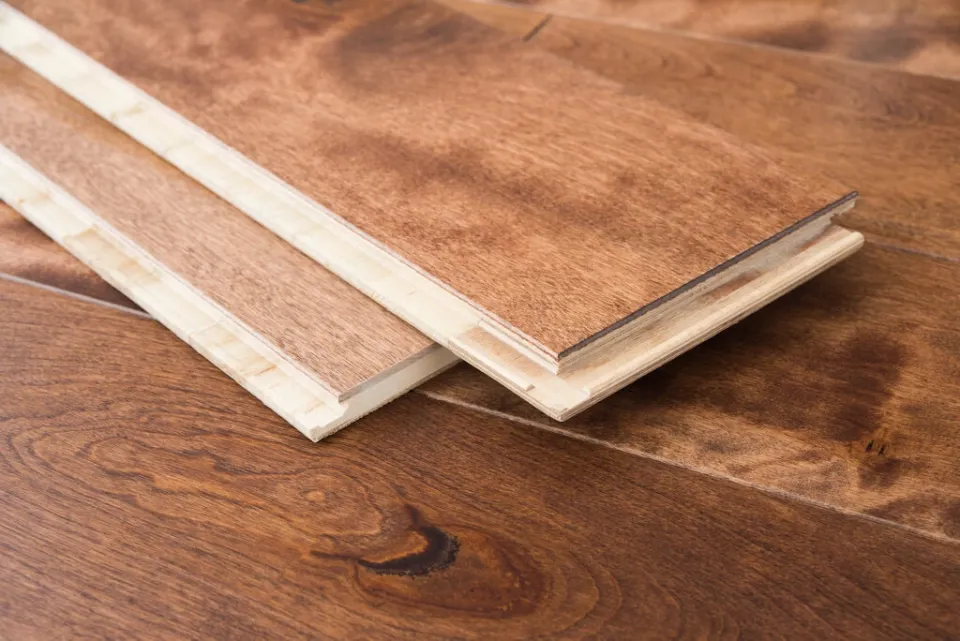
Maintenance and Repair of Floating Floor
The type of material that makes up a floating floor material determines how it should be cleaned and maintained. For instance, cleaning laminate and luxury vinyl typically only requires damp-mopping, whereas engineered hardwood should not be cleaned with water. Compared to glue-down or nail-down flooring, replacing damaged planks or boards on floating floors is typically much simpler because the damaged boards can be removed from the floating planks and replaced.
Design of Floating Floor
Generally speaking, glue-down or nail-down floors are preferred over floating floors, though this perception is starting to shift as the quality of the products has increased. However, compared to more expensive flooring options, floating floors have a reputation for slightly lowering real estate values. Luxury vinyl, which is typically regarded as being better than glue-down sheet vinyl or vinyl tiles, is less likely to be the case. Gradually, luxury vinyl flooring is replacing plastic laminate flooring as a favorite material for floating floors.
Because laminates and luxury vinyl are both available in countless variations of style and color, floating floors actually give you a great deal of design flexibility despite their somewhat stubborn reputation as inferior flooring. Both substances are now available in designs that closely resemble wood, stone, ceramics, or even metals.
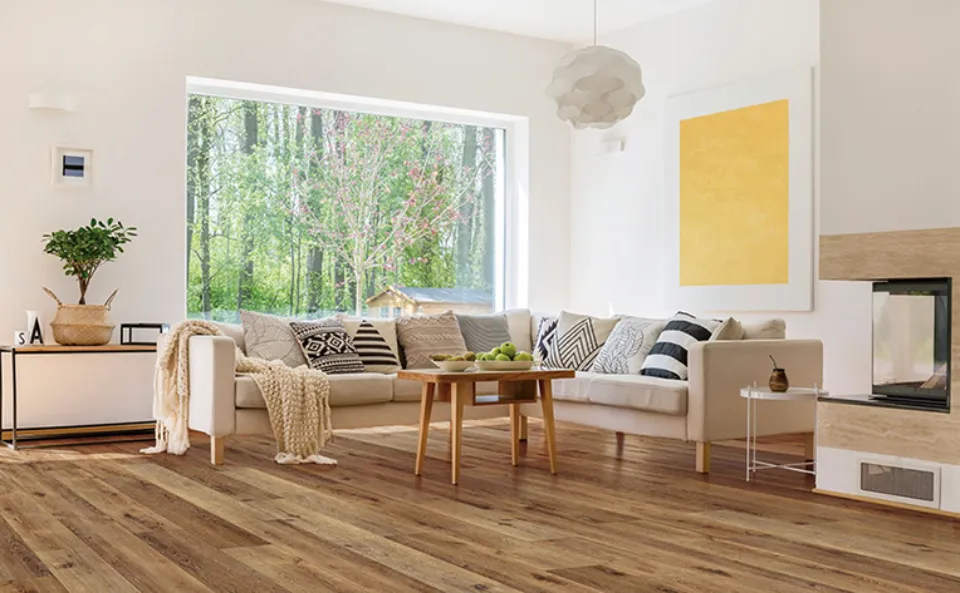
Lifespan of Floating Floor
Lifespan. Laminate flooring lasts between 15 to 25 years on average. The precise lifespan will vary based on the floor’s product quality, how well you take care of it, and how much use it sees in general. Laminate flooring occasionally lasts more than 25 years.
Floating Floor Installation
All three of the most common floating floor materials share a nearly identical installation method. First, the installer sets up the subfloor, taking care to create a surface that is as level and smooth as possible. A flat, solid substrate is necessary for a good installation because any flexing or unevenness of the subfloor will be transferred to the relatively thin layer of surface flooring. Next, the subfloor is covered with an underlayment. A thin layer of firm, resilient foam is frequently rolled out over the subfloor to serve as this. This layer makes the flooring beneath you softer and quieter by helping to absorb any flexing. Some types of floating flooring are engineered with a resilient underlayment bonded directly to the planks; with these, additional underlayment is not required.
The flooring is then put together, starting along one wall and moving to the other before finishing along the room’s other wall. All floating floors are generally installed with a small gap along the walls, which allows the flooring to expand and contract with seasonal humidity and temperature changes, preventing the floor from buckling. Baseboard shoe moldings typically cover the tiny gaps that surround the room’s perimeter.
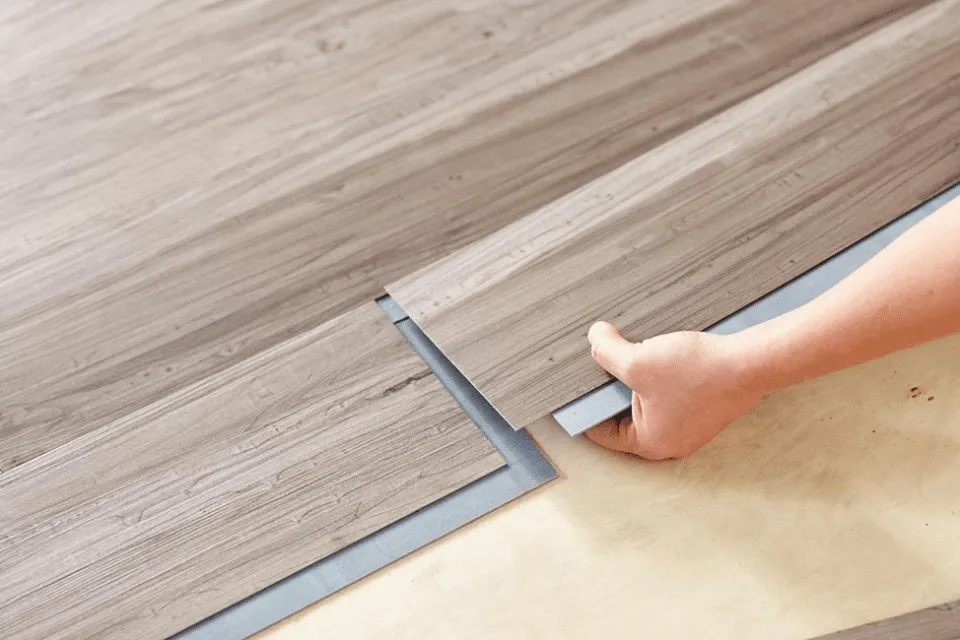
Big Savings on Floating Floors
Speaking of simplicity, many homeowners prefer floating floors because they’re inexpensive. In addition to frequently being less expensive to install, updating floating flooring is much less expensive than replacing traditional floors if there is a flood or accident at your home, or if you simply decide you’d like to do a renovation in the future. This is why floating floors are so popular in basements, kitchens, and bathrooms, where water damage can often be a reality, even with waterproof flooring.
Why Does Everyone Want a Floating Floor Today?
Floating flooring is popular with homeowners and trade professionals, but they both love it for some of the same reasons:
- No subfloor required reducing installation time and subfloor costs
- Can be installed at, above, or below grade – not possible with traditional solid flooring
- Very Affordable
- Easy to install, great for do-it-yourselfers
- Costs less to install than glue or nail down flooring like tile and solid hardwood flooring
- You can pick up and take the flooring with you if you ever move
- Features like built-in sound dampening technology, Microban ® anti-mold and mildew treatment
- Options and compliance with environmental initiatives like CARB2, LEED, FSC
- Residential and commercial warranties
- High quality finishes that are resilient and easy to care for
Remember that some of the features mentioned above might only be available from certain brands, so do your research to ensure that the floor you select offers the same level of quality, value, and details.
Laminate Floor Vs Floating Floor
Laminate flooring was introduced back in the mid-90s and most people remember it by one of the well-known brand names “Pergo”. The terms have become interchangeable because laminate flooring was the only type of flooring available at the time of its introduction and was installed using the floating system.
However, a laminate floor is just one type of floor that is installed using the “floating floor” installation system. The floating system can be used to install a wide variety of flooring types today.
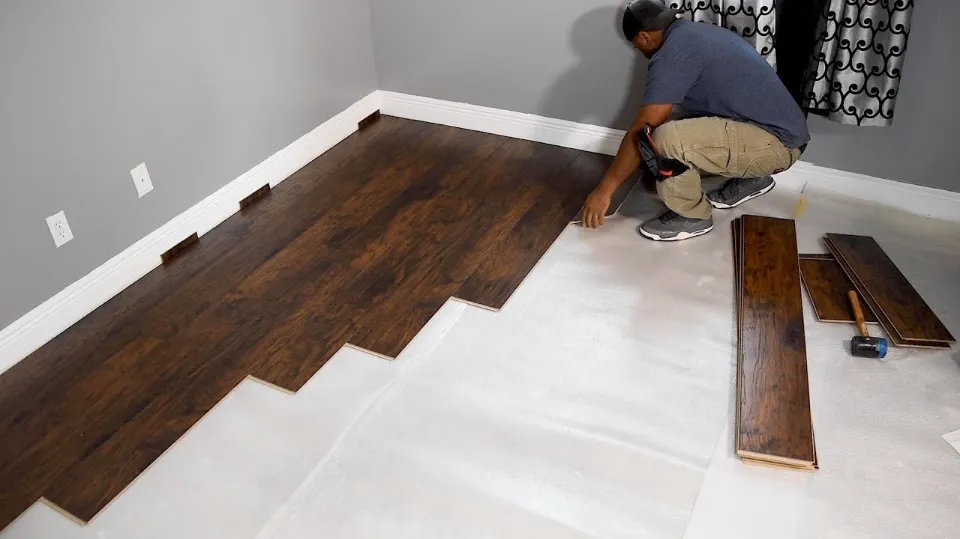
FAQs
What Are the Problems With Floating Floors?
A common problem with floating floors is the accumulation of mould, bacteria and fungus. This typically occurs when a room’s humidity is constantly high or moisture is left trapped between or under the floorboards. Before installing any laminate flooring, determine the level of moisture.
Can You Walk on Floating Floors?
Please be aware that a nailed hardwood floor and a floating floor differ slightly from one another. You will always feel a certain amount of movement as you walk over a floating floor. With time, you’ll grow accustomed to it and eventually stop noticing it. Don’t stress over that.
Is Floating Floor Waterproof?
Most unfortunately, the answer is no, laminate floors are not waterproof (although certain brands falsely claim to be waterproof). However, the majority of laminate floorboards are extremely water resistant, which means they can withstand water for a long time without absorbing moisture.
What Happens When Floating Floor Gets Wet?
Aside from discoloration in the flooring installation, damage from water can cause planks to become loose. In addition, excessive moisture over time causes warping and buckling, which is a problem.
Are Floating Floors Noisy?
They may offer excellent value for the money and are simpler to install. They can just tend to be noisier than a glued or nailed-down hardwood floor
Summary: What is a Floating Floor?
As the name suggests, floating floors are surfaces that can be installed to literally float above the subfloor or substrate (or, in some cases, old flooring and old subflooring if it cannot be removed). Up until the invention of floating flooring, floors were installed using one of two methods (or occasionally a combination of the two), making this concept quite revolutionary in the flooring industry. One is nailing down the flooring to the subfloor and the other is gluing the flooring down. Both are expensive and time-consuming.
If you have any questions, please leave a comment. My Prime Home tries to give you the best home improvement information. Don’t forget to share the post. Thank you for reading.
Read about



